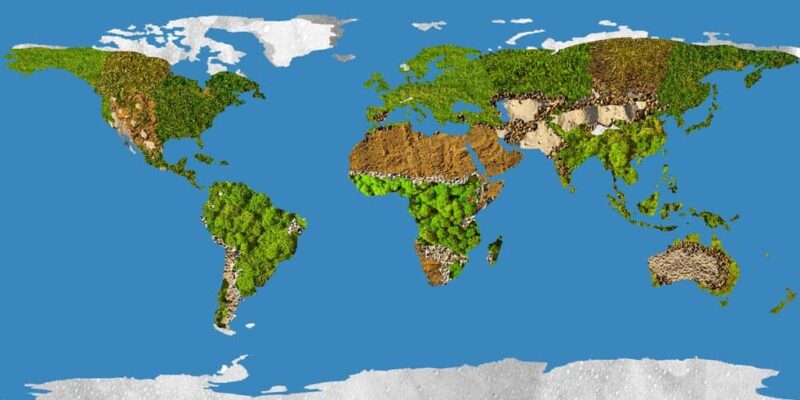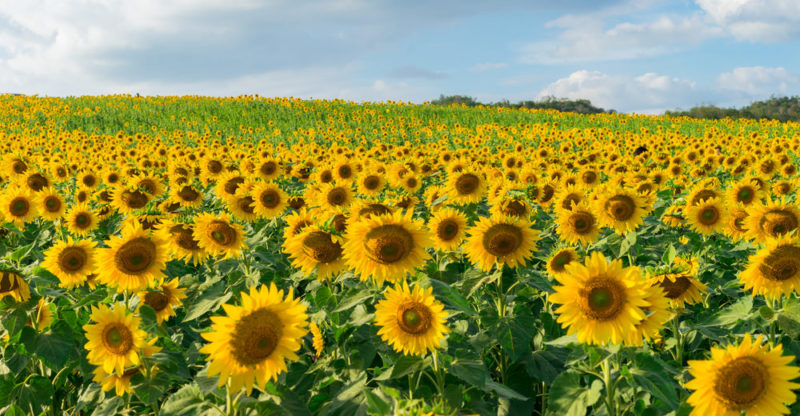We explain what a meadow is, its characteristics and its location. In addition, the flora, fauna and the impact of human intervention.
What is a meadow?
A meadow is a biome , that is, a set of ecosystems dominated by flat lands covered with grasslands and grass -type grasses, with almost no trees. It has a temperate climate in summer and cold in winter, with moderate rainfall. It is also called steppe or savanna .
A quarter of the continental surface is covered by grasslands of which, a large part, were intervened by human beings and destined for the agro-livestock industry due to the properties of the land. That is why it is common to find sectors of trees distributed in rows that were planted by humans to stop the strong winds.
Geographical location of the meadow

The Meadow extends into regions surrounded by forests and deserts on various continents , such as South America and parts of North America , South Africa , central Eurasia, and Australia.
The grasslands of the southern hemisphere are located between the tropic of Capricorn and the South Pole and tend to have more rainfall than those of the northern hemisphere that are located between the Tropic of Cancer and the North Pole and are usually warmer and temperate throughout the year.
Meadow Characteristics
Among the main characteristics of the meadow, the following stand out:
- It has a mostly flat landscape with slight undulations.
- The average temperature in summer is 21 ºC and in winter it is 11 ºC.
- The winds are usually strong due to the lack of forests or mountainous terrain that can contain them.
- The vegetation is made up of grasslands and grass plants that completely cover the land.
- The most common animals are small in size , such as weasels (although foxes and bison are abundant in North America ).
- In the meadows that were intervened by human action , trees are planted to stop the strong winds and animals are raised, such as cows or lambs, among others.
Meadow vegetation
The vegetation of the Meadow is characterized by being dense but low , that is, almost without woody plants or trees. Herbaceous plants such as grasses, bushes, grasses and rushes predominate. Some examples are: sunflower, clover, reeds, lemongrass, and flowers such as wild indigos.
Meadow wildlife

The fauna of the meadow is characterized by being diverse , where they live: deer, hares, foxes, owls, bison, reptiles , spiders, armadillos, meadow dogs (which are from the marmot family) and birds , such as ducks. and geese. Cows, sheep, pigs, goats and chickens are found in the grasslands that were altered by human action.
Human intervention in the meadow

The intervention of the human being in the grasslands has generated great changes in the biome , such as the alteration of the soil , flora and fauna. Much of the world's meadows are used for the agricultural and livestock industry, due to the fact that they have flat and suitable soil for cultivation and for raising livestock.
Intensive crops of corn, wheat, soybeans, sunflowers are usually grown on the meadows, and animals such as pigs, cows, chickens, sheep and lambs are often raised . They are lands exploited by the industry for the benefit of the human being, although at present there is increasing social and environmental pressure to moderate this type of activity.
The above content published at Collaborative Research Group is for informational and educational purposes only and has been developed by referring to reliable sources and recommendations from technology experts. We do not have any contact with official entities nor do we intend to replace the information that they emit.
Anas is an editor of a prestigious publishing company in the United States. She studied Mathematics in Arizona. Anas is also a teacher and one of her long-term goals is to build an institution that offers free education to everyone who are financially not stable. .
Leave a reply
Your email address will not be published. Required fields are marked *Recent post

Sport: What Is It, Types, Risks, Features, Characteristics and Examples

Dogs: Emergence, Features, Characteristics, Feeding and Breeds

Story: Definition, Elements, Structure, Features and Characteristics

